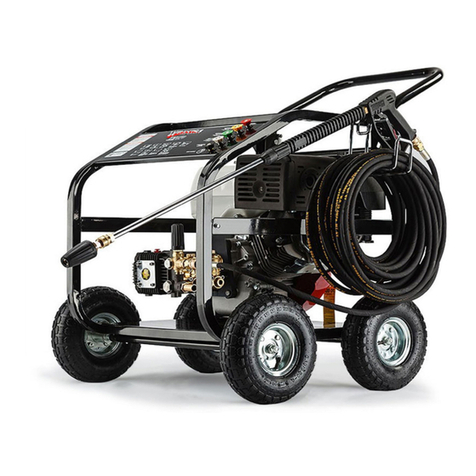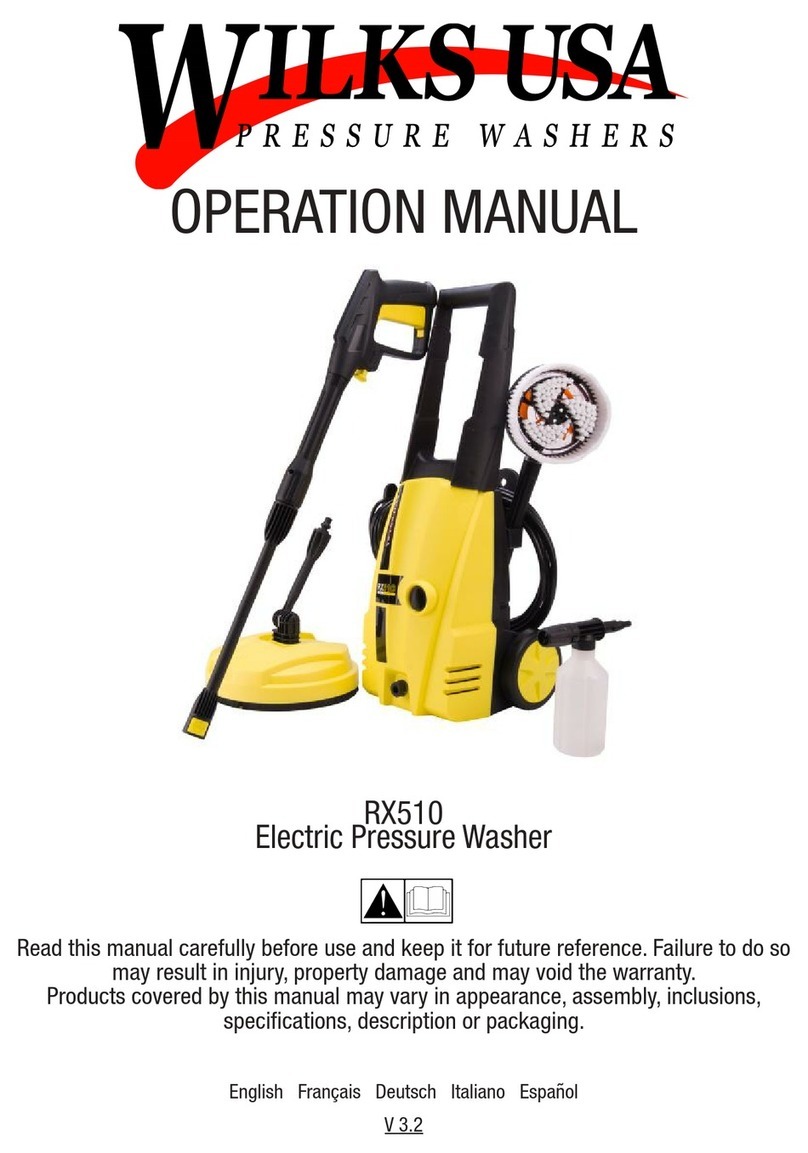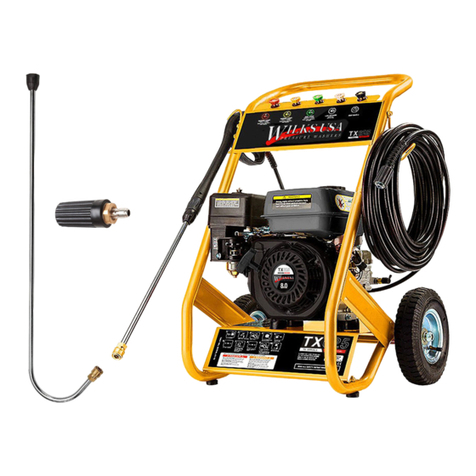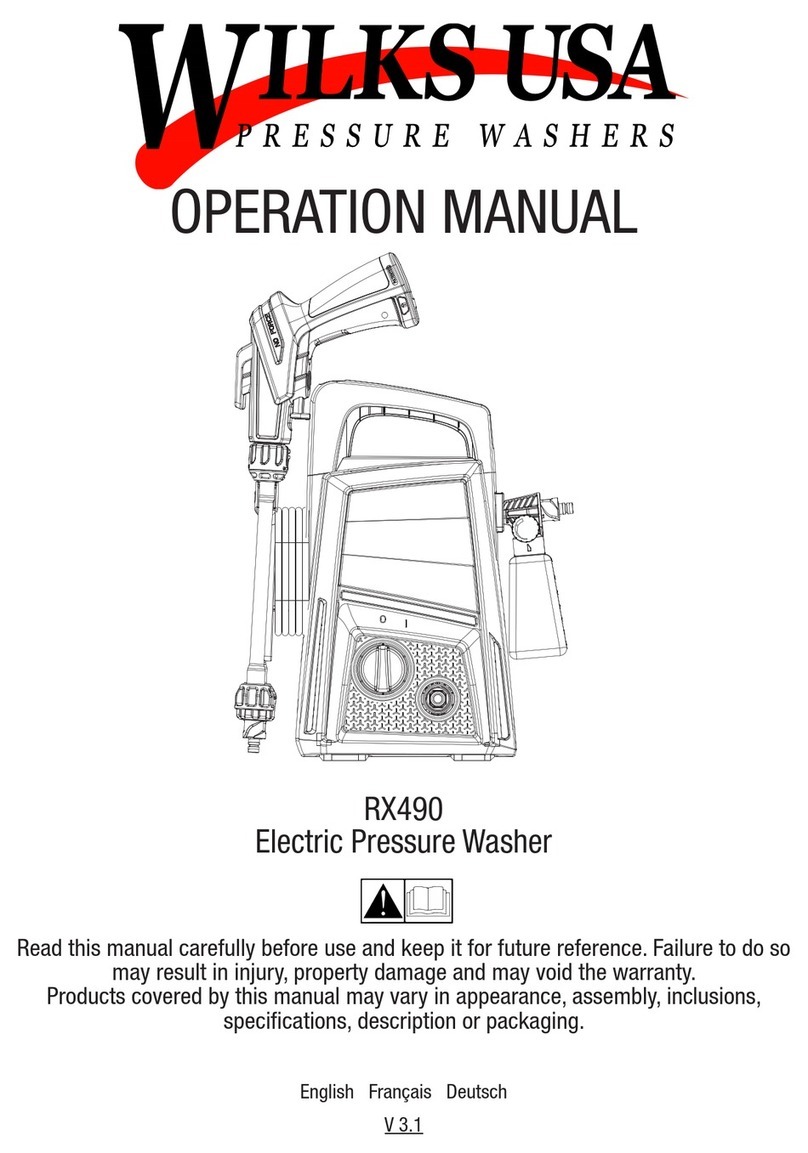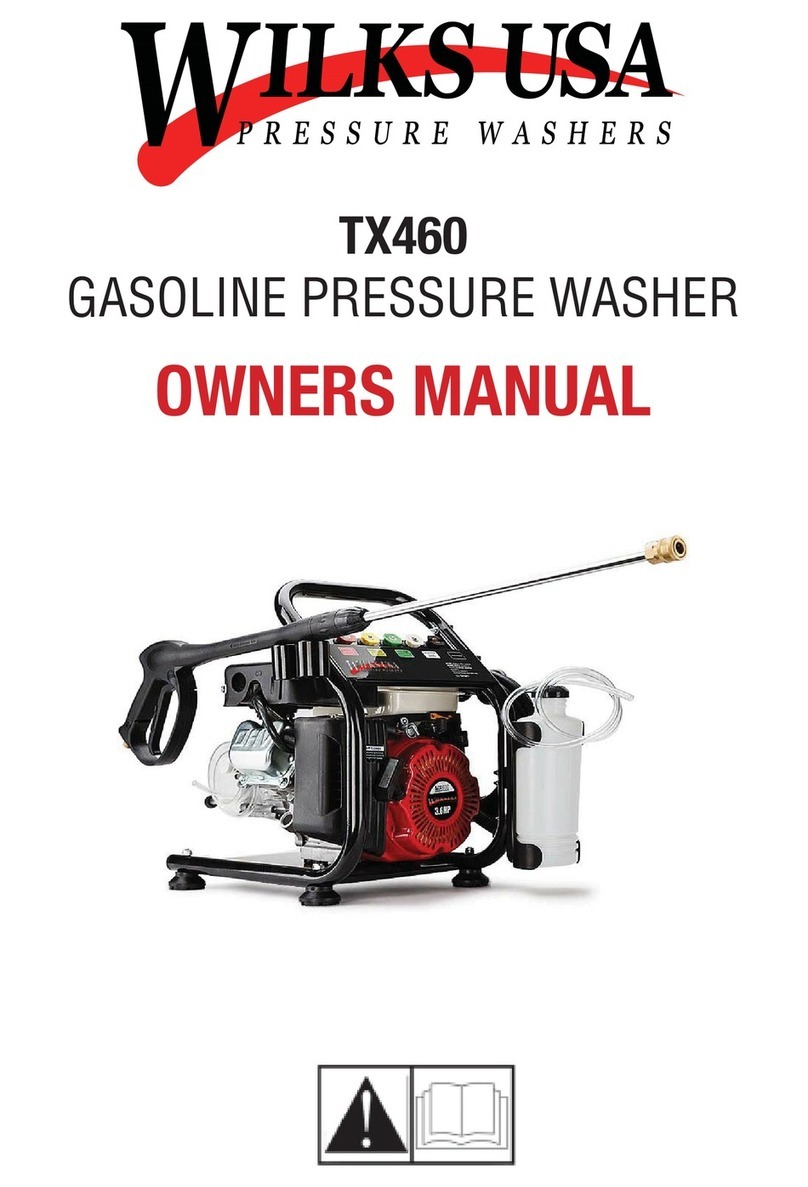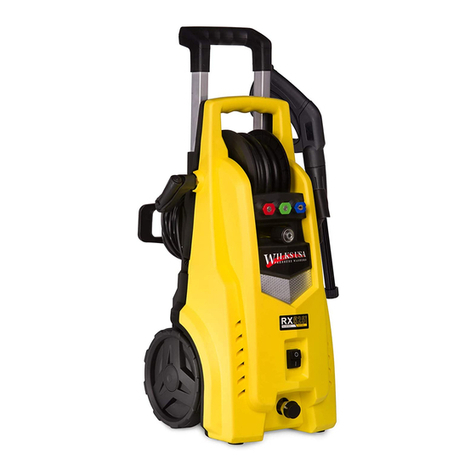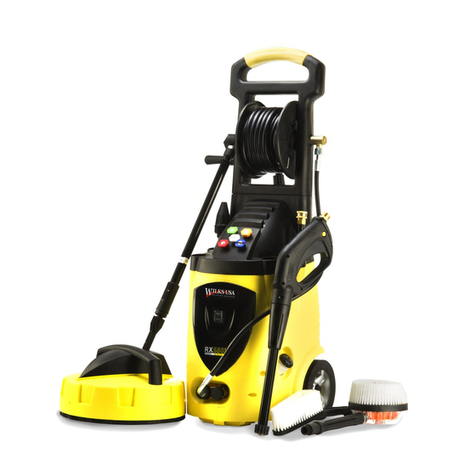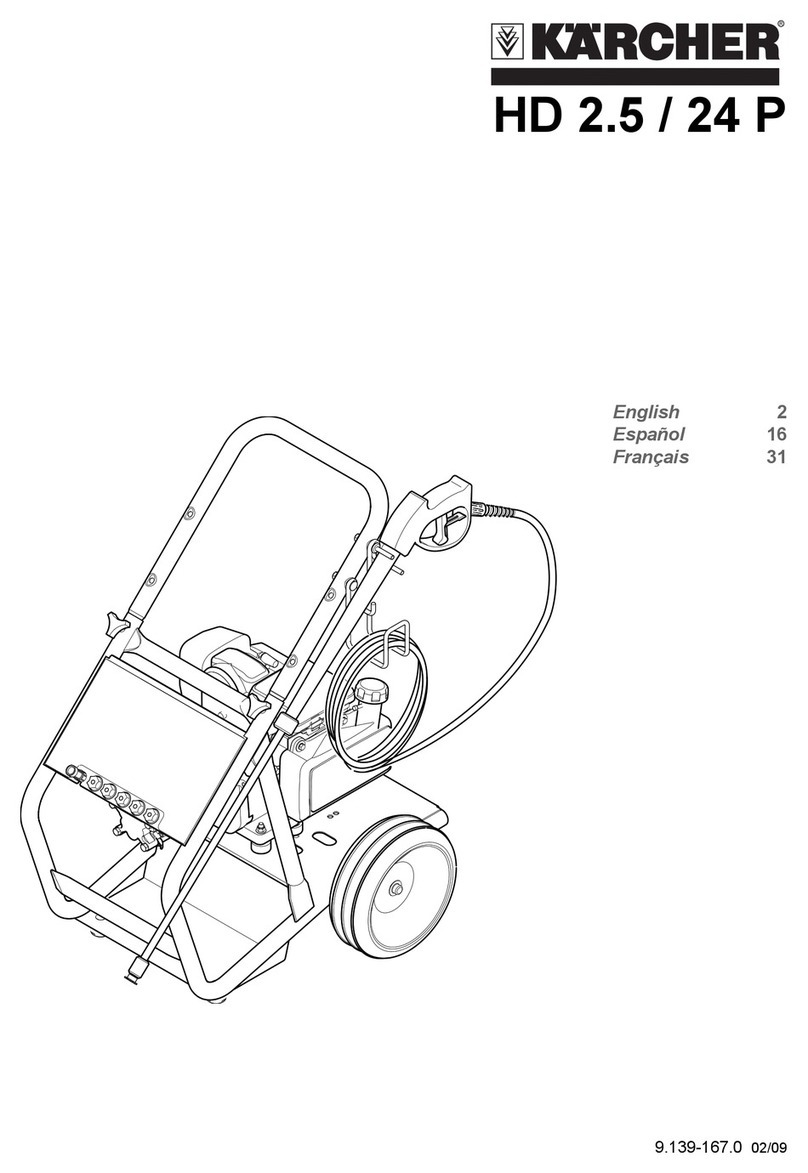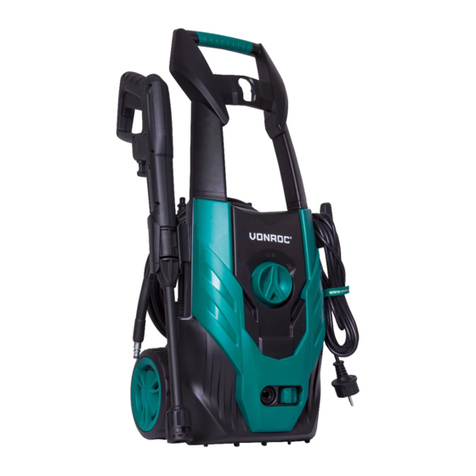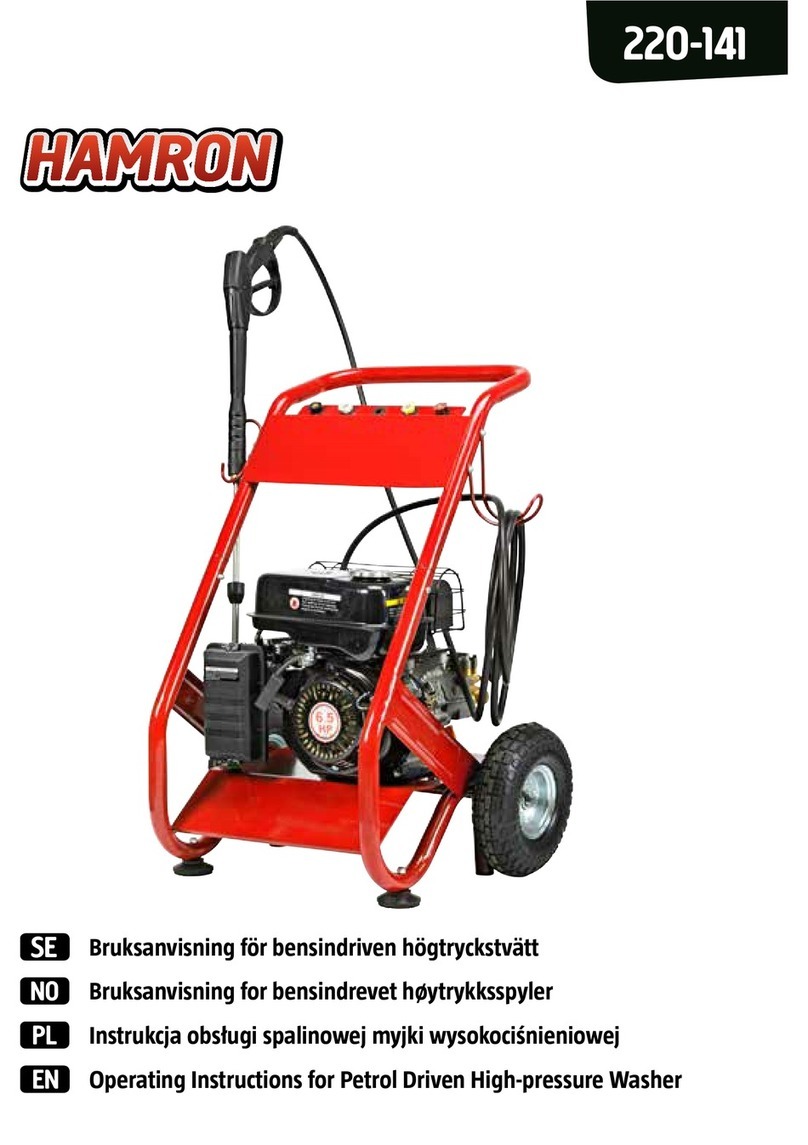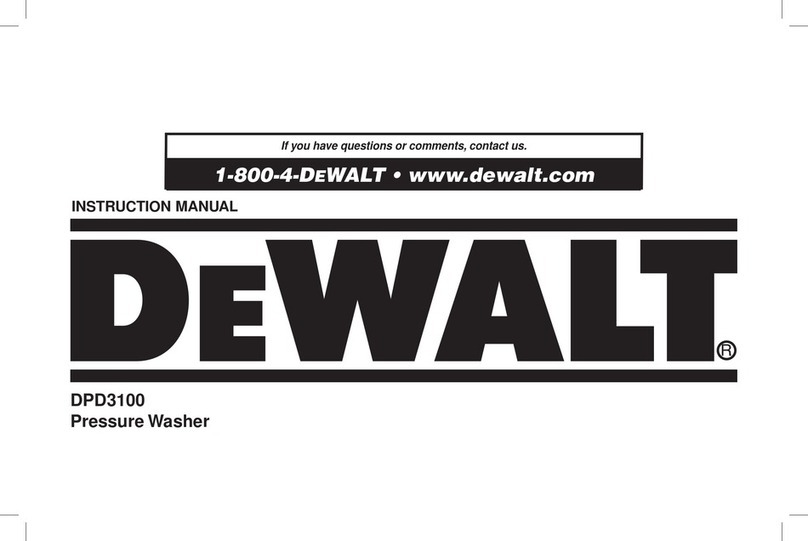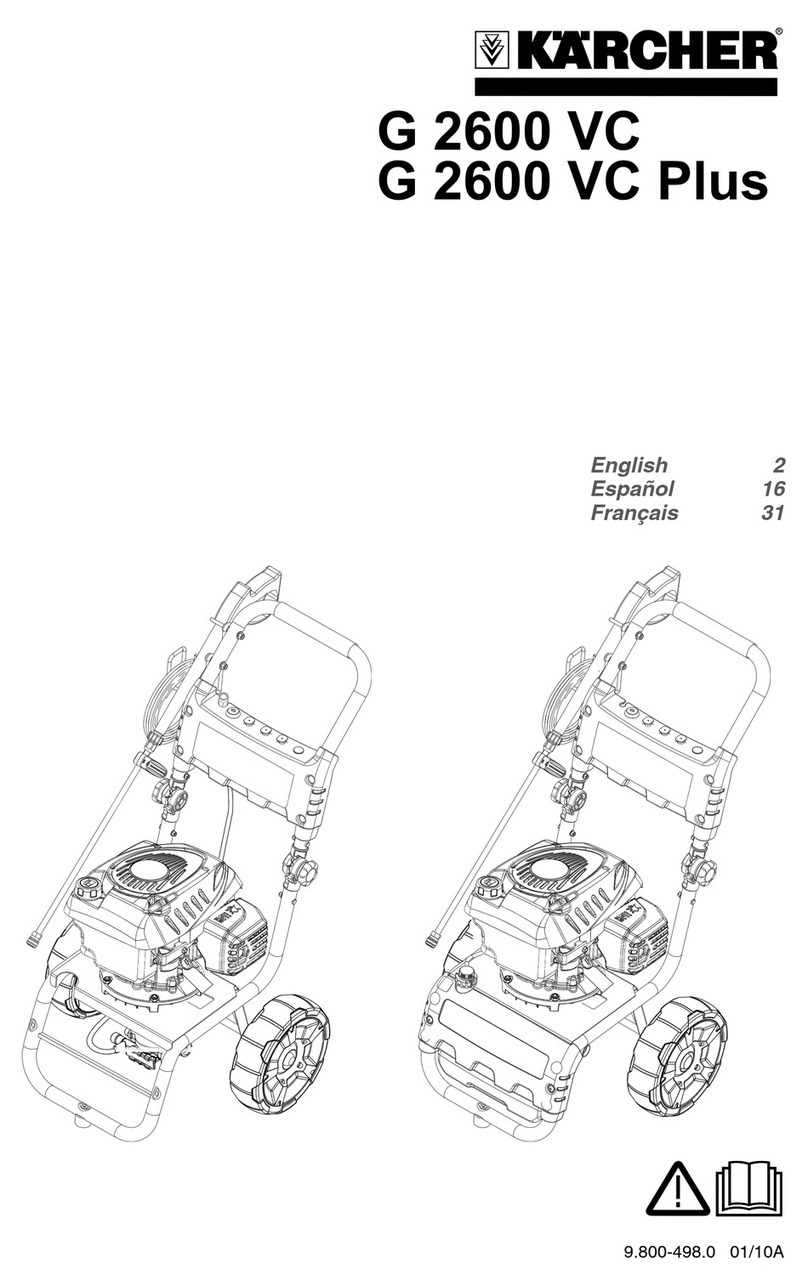
TX625i
© Wilks-USA 3
© Wilks-USA
English
• Always remove any excess water from the system after use to avoid freeze damage.
• Do not touch the nozzle or water spray while operating.
• Never spray directly at the pressure washer or any electrical units / wires.
• Never run the washer with damage to the high pressure hose.
• All hose connections must be properly sealed.
• Never disconnect the high-pressure hose from the machine while the system
is still pressurised.
• Never operate when there is a noticeable change in engine speed, a
noticeable loss of pressure, an engine misfire, signs of smoke or fire,
excessive vibration or if there is rain or inclement weather.
• All equipment must be placed on a rm, level and stable surface.
• Keep the pressure washer clean and free of oil, mud and dirt.
• Be sure ice has not formed in any part of the equipment before starting.
• Wear safety goggles while operating.
• Never directly spray the hose at people or animals.
• Never allow children to operate the pressure washer at any time.
• The spray gun should be secured by locking the trigger when not in use.
• Do not run the pressure washer for more than two minutes without depressing the
trigger.
• Test the pressure washer on a small inconspicuous area rst. Some surfaces can be
damaged by high pressure water spray.
• Before every use, check oil level
• Only use unleaded gasoline with an octane level over 86.
• Ensure your hose does not touch the hot exhaust during or after use.
• Ensuring the water supply is clean and free of any foreign objects.
• Inlet water temperature must not exceed 40ºC and 20 PSI.
Safety


